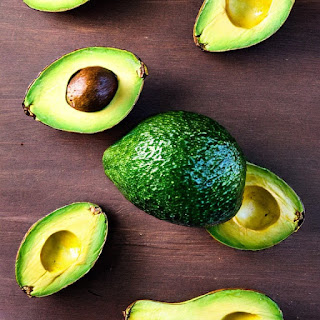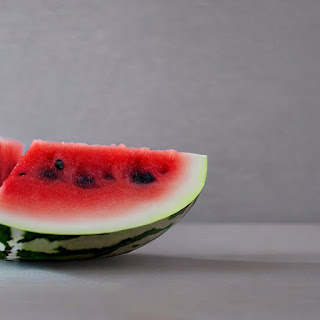Uncover fascinating food facts that will leave you amazed and hungry for more. From surprising origins to mind-blowing nutritional benefits, explore the hidden secrets behind your favorite dishes.
Food has always been an essential part of our lives, but there's more to it than just satisfying our hunger. In this blog post, we delve into the intriguing world of food facts, uncovering the hidden secrets and surprising origins of some of your favorite dishes. Get ready to be amazed and hungry for more!
Pizza:
Did you know that pizza, the beloved Italian dish, originated in Naples? It was initially a simple meal for the poor, consisting of flatbread topped with tomatoes and cheese.
Today, pizza comes in countless variations and is enjoyed worldwide, with the Margherita pizza being the most iconic and classic version.
Chocolate:
Chocolate, a treat loved by many, has a rich history dating back to the ancient Mayans and Aztecs. They believed it had mystical properties and used it as currency.
Besides being a delightful indulgence, dark chocolate has numerous health benefits, such as being a powerful source of antioxidants and improving heart health.
Sushi:
Sushi, the popular Japanese delicacy, has a fascinating origin. It was initially developed as a way to preserve fish by fermenting it with rice.
Today, sushi has evolved into an art form, with various types like nigiri, maki, and sashimi, each offering a unique culinary experience.
Bananas:
Bananas are technically berries, botanically classified as berries due to their structure and development.
They are a great source of potassium, which helps maintain healthy blood pressure and heart function.
Honey:
Honey never spoils! Archaeologists have found pots of honey in ancient Egyptian tombs that are over 3,000 years old and still perfectly edible.
Honey has natural antibacterial properties and can be used as a topical treatment for minor cuts and burns.
Tomatoes:
Contrary to popular belief, tomatoes are actually fruits, not vegetables. They belong to the nightshade family and are botanically classified as berries.
Tomatoes are a rich source of lycopene, a powerful antioxidant that has been linked to a reduced risk of certain cancers.
Coffee:
Coffee is one of the most widely consumed beverages in the world. It is believed to have originated in Ethiopia and was later cultivated and popularized by Arab traders.
Moderate coffee consumption has been associated with various health benefits, including improved cognitive function and a reduced risk of certain diseases like Parkinson's and type 2 diabetes.
Garlic:
Garlic has been used for centuries for both culinary and medicinal purposes. It contains a compound called allicin, which has antibacterial and antifungal properties.
Studies have shown that regular consumption of garlic may help lower cholesterol levels and reduce the risk of heart disease.
Apples:
Apples float in water because they are made up of 25% air, giving them buoyancy.
There are over 7,500 different apple varieties grown worldwide, each with its own unique taste and texture.
Avocados:
Avocados are fruits that contain more potassium than bananas, making them an excellent choice for maintaining healthy blood pressure.
The Hass avocado, with its distinctive pebbled skin, is the most popular variety consumed globally.
Peanuts:
Despite their name, peanuts are not nuts. They are legumes, belonging to the same family as beans and lentils.
Peanut butter was invented by a physician named Dr. John Harvey Kellogg as a protein substitute for patients who couldn't chew meat.
Pineapples:
Pineapples are the only known source of an enzyme called bromelain, which aids digestion and can also be used as a natural meat tenderizer.
Contrary to popular belief, pineapples do not grow on trees but on a plant that belongs to the bromeliad family.
Cheese:
The largest wheel of cheese ever produced weighed over 57,000 pounds and was created in 1989 in Wisconsin, USA.
Cheese is a great source of calcium, protein, and various essential vitamins and minerals.
Cucumbers:
Cucumbers are primarily composed of water, with a water content of approximately 96%.
They belong to the same botanical family as melons and pumpkins.
Strawberries:
Strawberries are the only fruit that bears its seeds on the outside. On average, a single strawberry has around 200 seeds.
They are rich in antioxidants and vitamin C, which can boost immunity and promote healthy skin.
Salmon:
Salmon is not naturally pink; their flesh gets its pink color from a pigment called astaxanthin, which they obtain from their diet of krill and shrimp.
Salmon is an excellent source of omega-3 fatty acids, which are beneficial for heart health.
Watermelon:
Watermelon is a hydrating fruit, with a water content of around 92%.
It is believed to have originated in Africa and is now grown in over 90 countries worldwide.
Quinoa:
Quinoa is often referred to as a "superfood" due to its high protein content and numerous health benefits.
Despite its recent surge in popularity, quinoa has been cultivated in the Andean region of South America for thousands of years.
These food facts offer a glimpse into the fascinating and diverse world of culinary knowledge. Exploring these facts can deepen your understanding and appreciation for the foods we consume and the remarkable stories behind them.
Now you can check out our
FAQs:
Q1: Are there any surprising health benefits of consuming spicy foods?
A1: Yes, spicy foods can provide numerous benefits, including boosting metabolism, aiding digestion, and reducing inflammation. However, it's essential to consume them in moderation.
Q2: Is it true that carrots improve eyesight?
A2: While carrots contain vitamin A, which is vital for eye health, they alone won't miraculously improve eyesight. A balanced diet and regular eye check-ups are key to maintaining good vision.
Conclusion:
Food is not only nourishment for our bodies; it's a gateway to fascinating stories and hidden secrets. From the humble origins of pizza to the mystical history of chocolate, every dish has a tale to tell. Exploring the world of food facts not only satisfies our curiosity but also deepens our appreciation for the culinary wonders around us. So, the next time you sit down for a meal, remember that there's more to it than meets the eye. Bon appétit!

































